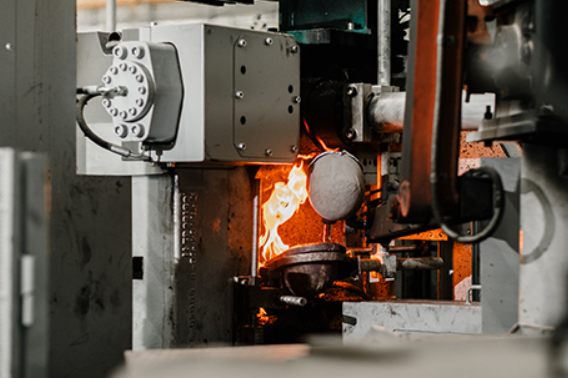Pressure die casting is an efficient manufacturing method that utilizes considerable pressure. Why is it used and what materials are used in the process? We’ll also compare pressure casting and investment casting.

Why is Pressure Die Casting Used?
Pressure die casting is a metal casting process in which molten metal is injected at high pressure into a mold cavity. This process is used for a variety of reasons, including:
– High production rates: Pressure die casting allows for high production rates, making it an ideal process for large-scale production runs.
– Excellent surface finish: The high pressure used in die casting ensures that the final product has an excellent surface finish with fine details, which is especially important for products that will be visible or used in a variety of settings.
– Close tolerances: Die casting allows for tight tolerances, ensuring that each product is consistent and meets the required specifications.
– Complex shapes: Die casting can produce parts with complex shapes, including thin-walled sections, which can be difficult or impossible to produce using other casting methods.
– Reduced waste: Die casting produces very little waste, as the excess material can be recycled and reused.
– Strength and durability: The high pressure used in die casting creates a dense, homogeneous metal structure that results in parts that are strong and durable.
What Material is Pressure Die Cast?
Pressure die casting can be used to cast a wide range of materials, including:
– Aluminum alloys: These are the most commonly used materials in pressure die casting due to their excellent strength, durability, and lightweight properties.
– Zinc alloys: Zinc is often used in die casting for products that require a high level of precision, such as electrical connectors because it has a low melting point and is easy to cast.
– Magnesium alloys: Magnesium is also used in die casting for products that require lightweight properties and good strength-to-weight ratios, such as automotive parts.
– Copper alloys: Copper is used in die casting for electrical and plumbing components, as it has excellent conductivity properties.
– Brass alloys: Brass is often used in die casting for decorative and ornamental products, as it has a unique golden color and good corrosion resistance.
Pressure Casting vs Investment Casting
Pressure die casting and investment casting are both casting processes used to create metal parts, but they differ in several ways:
1) Process: Pressure die casting involves injecting molten metal into a mold under high pressure, while investment casting involves creating a wax pattern, coating it with a ceramic shell, and then melting out the wax to leave a cavity for the metal to be poured into.
2) Tolerance and surface finish: Pressure die casting is capable of producing parts with closer tolerances and smoother surface finishes due to the high pressure used to force the metal into the mold. Investment casting is capable of producing parts with excellent surface finishes, but typically with looser tolerances.
3) Material: Pressure die casting can be used to cast a wider range of materials than investment casting, including aluminum, zinc, magnesium, and copper alloys. Investment casting is typically used for casting steel, stainless steel, and high-temperature alloys.
4) Production volume: Pressure die casting is well-suited for high-volume production runs due to its speed and efficiency, while investment casting is better suited for lower-volume production runs due to the time and cost required to create the wax patterns and ceramic shells.
5) Cost: Pressure die casting typically has lower per-part costs for high-volume production runs, while investment casting is more expensive per part due to the added time and materials required for the wax patterns and ceramic shells.

